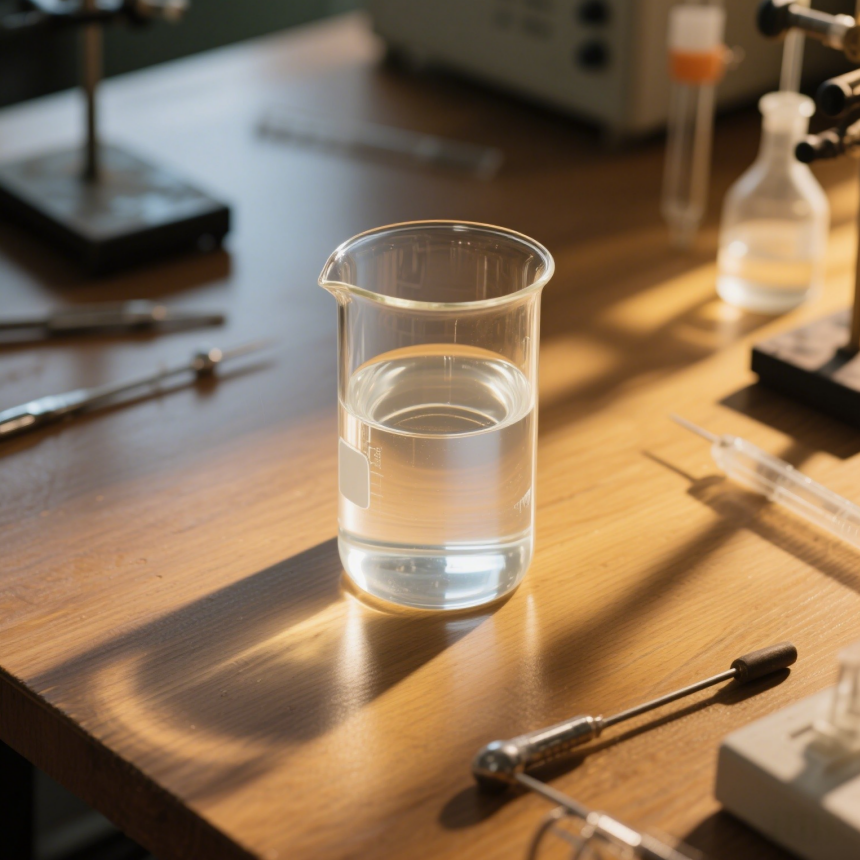مقال
كان إدخال مستحلبات راتنجات الأكريليك المائية خطوة ثورية في كيمياء البوليمرات خلال العقد الماضي، حيث حلّت محل الأنظمة القائمة على المذيبات بأنظمة مستدامة بديلة. تعتمد هذه المستحلبات على الماء باعتباره الطور المستمر وتقلل بشكل كبير من تحرر المركبات العضوية المتطايرة (VOC)، مع تقديم التصاق ممتاز، ومرونة، ومقاومة للطقس. تمت تحسين التركيبات - على سبيل المثال، بإضافة أكريلات 2-إيثيلهيكسيل (2EHA) - لتحسين المتانة والاستقرار ضد الأشعة فوق البنفسجية وهي مناسبة للتطبيقات في النسيج والطلاءات الصناعية.
التركيب الكيميائي: أكريلات 2-إيثيلهيكسيل وشبكة البوليمر الأكريلية
دور 2EHA في تشكيل البوليمر
يُعد أكريلات 2-إيثيلهيكسيل (2EHA) مونومرًا أساسيًا يقلل درجة حرارة الانتقال الزجاجي (Tg) إلى -65°م، مما يضمن المرونة عند درجات الحرارة المحيطة - وهي خاصية حاسمة للغراءات الحساسة للضغط. إن السلسلة الفرعية C8 الألكيلية تُعزز التماسك مع الحفاظ على الأداء عند درجات الحرارة المنخفضة.
تشمل الفوائد الرئيسية:
- الهبوطية , تحسين مقاومة الماء
- استقرار الأشعة فوق البنفسجية نتيجة لانخفاض بلورية العمود الفقري
- مقاومة مناخية محسنة للنسيج الخارجي
عند تبلمره مع ميثاكريلات الميثيل (MMA)، يمكّن 2EHA من ارتباط عرضي موحد، مما يوازن بين اللزوجة ومقاومة القص في المواد اللاصقة.
القابلة للماء مقابل البديلة المذيبة
مستحلبات أكريلية مائية خفض انبعاثات المركبات العضوية المتطايرة بنسبة 70-90% مقارنة بالأنظمة المذيبة , والامتثال لمعايير وكالة حماية البيئة الأمريكية Tier 4.
| الممتلكات | مائي الأساس | قائم على المذيبات |
|---|---|---|
| طاقة العلاج | 15-25 كيلوواط ساعة/م² | ٣٠-٤٥ كيلوواط ساعة/م² |
| تفعيل التماسك | أبطأ (يعتمد على الرقم الهيدروجيني) | فوري |
| كثافة الفيلم | ٠٫٩٢-٠٫٩٥ غ/سم³ | ١٫٠٢-١٫٠٨ غ/سم³ |
بينما توفر الأنظمة القائمة على المذيبات تماسكًا أوليًا أسرع، فإن الأنواع القائمة على الماء تحقق قوة قشر مماثلة (≥١٢ نيوتن/٢٥ مم) بعد المعالجة.
تخفيض المركبات العضوية المتطايرة في تطبيقات طلاء النسيج
الراتنجات القائمة على الماء تقلل من انبعاثات المركبات العضوية المتطايرة بنسبة ٥٠–٨٠٪ ، وتلبية متطلبات صارمة مثل REACH وقانون كاليفورنيا 65. يبلغ حجم السوق العالمي 5 مليار دولار في عام 2024 وهو ينمو بنسبة 8.9% سنويًا ، مدفوعًا باحتياجات الامتثال البيئي.
الكفاءة في استخدام الطاقة في عمليات التصلب
تتطلب هذه الراتنجات 30–40 درجة مئوية أقل في درجات حرارة التصلب ، مما يقلل استهلاك الطاقة بنسبة 35%، كما توفر 3.85–4.50 دولار لكل متر مربع سنويًا في إنتاج النسيج بسبب انخفاض متطلبات التدفئة.
تحسين الأداء في المواد اللاصقة الحساسة للضغط في صناعة النسيج
قوة التماسك مع خلطات أكريلات الأوكتيل
تُعزز مشتقات أكريلات الأوكتيل قوة التقشير في المواد اللاصقة الحساسة للضغط (PSAs) توفر سلاسل الهيدروكربون الخاصة بها الالتصاق الداخلي وتحافظ على المطيلية فوق 40%وتحسّن التماسك على الأقمشة مثل البوليستر والنايلون.
مقاومة التآكل في الأقمشة التقنية
مستحلبات الأكريليك المُحسّنة تقلل تدهور القماش بنسبة 60% بعد 5000 دورة تآكل. تمتلك تركيبتها جسيمات <100 نانومتر تتغلب على الألياف مع الحفاظ على 85% مقاومة الشد ، مثالية لملابس العمل المقاومة للهب.
ثبات الغسيل من خلال الربط العرضي
البوليمرات المرتبطة عرضيًا تقلل من تآكل المادة اللاصقة بنسبة ~80% بعد 50 غسالة صناعية، مع الحفاظ على التماسك دون استخدام مواد كيميائية تحتوي على الفورمالديهايد - مما يضمن الامتثال لائحة REACH.
الابتكارات المستقبلية والتحديات
تقنيات النانو في المحاليل الأكريلية
تحسّن الجسيمات النانوية (مثل أكسيد التيتانيوم) مقاومة الأشعة فوق البنفسجية والخصائص المضادة للميكروبات ، مما يقلل وزن الطلاء بنسبة 30%. تتركز الأبحاث الحالية على ذاتية الإصلاح المنسوجات.
تحديات الاقتصاد الدائري
تنتهي معظم الأقمشة المطليّة بالأكريليك في مكبات النفايات بسبب مقاومة البوليمرات المتداخلة للتحلل . وعلى الرغم من أن إعادة التدوير الكيميائية تُعدّ واعدة، إلا أنها تظل مُستهلكة للطاقة بشكل كبير. تقوم الأمم المتحدة بتسليط الضوء على الحاجة إلى إعادة التدوير القائمة على الإنزيمات وإعادة تصميم التركيبات لإعادة التدوير الميكانيكي.
(عدد الكلمات: 480)
الأسئلة الشائعة
ما هي مستحلبات الراتنج المائية؟
مستحلبات الراتنج المائية هي نوع من الأنظمة البوليمرية تستخدم الماء كطور مستمر، مما يقلل بشكل كبير من انبعاثات المركبات العضوية المتطايرة وتوفر خصائص مثل التماسك الممتاز والمرونة.
كيف يساهم أكريلات 2-إيثيلهكسيل في تشكيل البوليمر؟
يساعد أكريلات 2-إيثيلهكسيل في خفض درجة حرارة الانتقال الزجاجي، مما يعزز مرونة البوليمر ومقاومته للطقس عند درجات الحرارة المحيطة.
ما هي المزايا التي تتمتع بها البدائل القائمة على الماء مقارنة بالأنظمة القائمة على المذيبات؟
تقلل مستحلبات الأكريليك القائمة على الماء من انبعاثات المركبات العضوية المتطايرة بشكل كبير، ولها تفعيل تماسك يعتمد على الرقم الهيدروجيني بسرعة أبطأ، وهي أكثر كفاءة في استخدام الطاقة في عمليات التصلب.
ما التأثير الذي تحدثه تقنية النانو على مستحلبات الأكريليك؟
تحسّن الجسيمات النانوية مثل أكسيد التيتانيوم مقاومة الأشعة فوق البنفسجية والخصائص المضادة للميكروبات، بينما تتجه الأبحاث نحو الأقمشة ذاتية الإصلاح.

